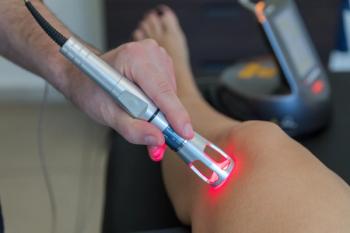
Pediatric Literature Updates
At the 2022 SDPA Conference, Lucia Diaz, MD, reviews literature updates to help physicians better care for pediatric patients.
Lucia Diaz, MD, chief of pediatric & adolescent dermatology, dermatology residency associate program director, and assistant professor of medicine and pediatrics at the University of Texas Dell Medical School in Austin, Texas, gave an overview of new pediatric literature at the joint session, “Updates on Adult and Pediatric Literature.” During her session, Diaz reviewed clinical scenarios and questions that may arise in a physician’s practice and articles that will help tackle challenging pediatric cases.
Case 1: A one-month-old healthy female with a large, red facial birthmark, referred to a dermatology clinic for laser treatments.
In this case review, Diaz began by explaining that a large red mark on an infant’s face should immediately tell a physician that this is an important case to address right away. One of the first considerations for the clinical presentations Diaz described is Sturge-Weber syndrome (SWS), a neurological condition present at birth. The angiomas can eventually lead to port-wine birthmarks on the face. The forehead and upper eyelid are high-risk areas for port-wine stains and SWS. Laser treatment is the best option for infants with SWS or port-wine stains.
“I typically start at one month of age, if I can, just to get more optimal responses of 50% to 90% clearance with 8 to 10 sessions,” said Diaz.
Case 2: A 6-month-old female, previously healthy, with a large painful leg lesion and sleep issues after treatment.
Diaz diagnosed this patient with ulcerated hemangiomas. Beta-blockers are currently the best standard of treatment to prevent ulceration in pediatric patients. Propranolol is usually the go-to beta-blocker selection, as it has the most literature and safety data and is already approved by the US Food and Drug Administration. Pain control and wound care are important considerations with painful ulcerated hemangiomas in pediatric patients, but some patients can have significant sleep disturbances with beta-blockers because they cross the blood brain barrier. When considering other beta-blockers, some studies reference oral nadolol as an effective alternative. According to a study referenced by Diaz, oral nadolol was not inferior to oral propranolol and had an overall good safety profile.
“The group included 71 patients and they were mostly evenly divided. What really came out of this is that nadolol was not inferior to propranolol and it led to a quicker resolution in terms of how quickly the lesions got smaller. Also, there was an improvement in color and other factors,” said Diaz.
Reference
Diaz L. Update on adult and pediatric literature. Presented at the 2022 Society of Dermatology Physician Assistant Conference; November 17-20, 2022; Miami, Florida.
Newsletter
Like what you’re reading? Subscribe to Dermatology Times for weekly updates on therapies, innovations, and real-world practice tips.
















